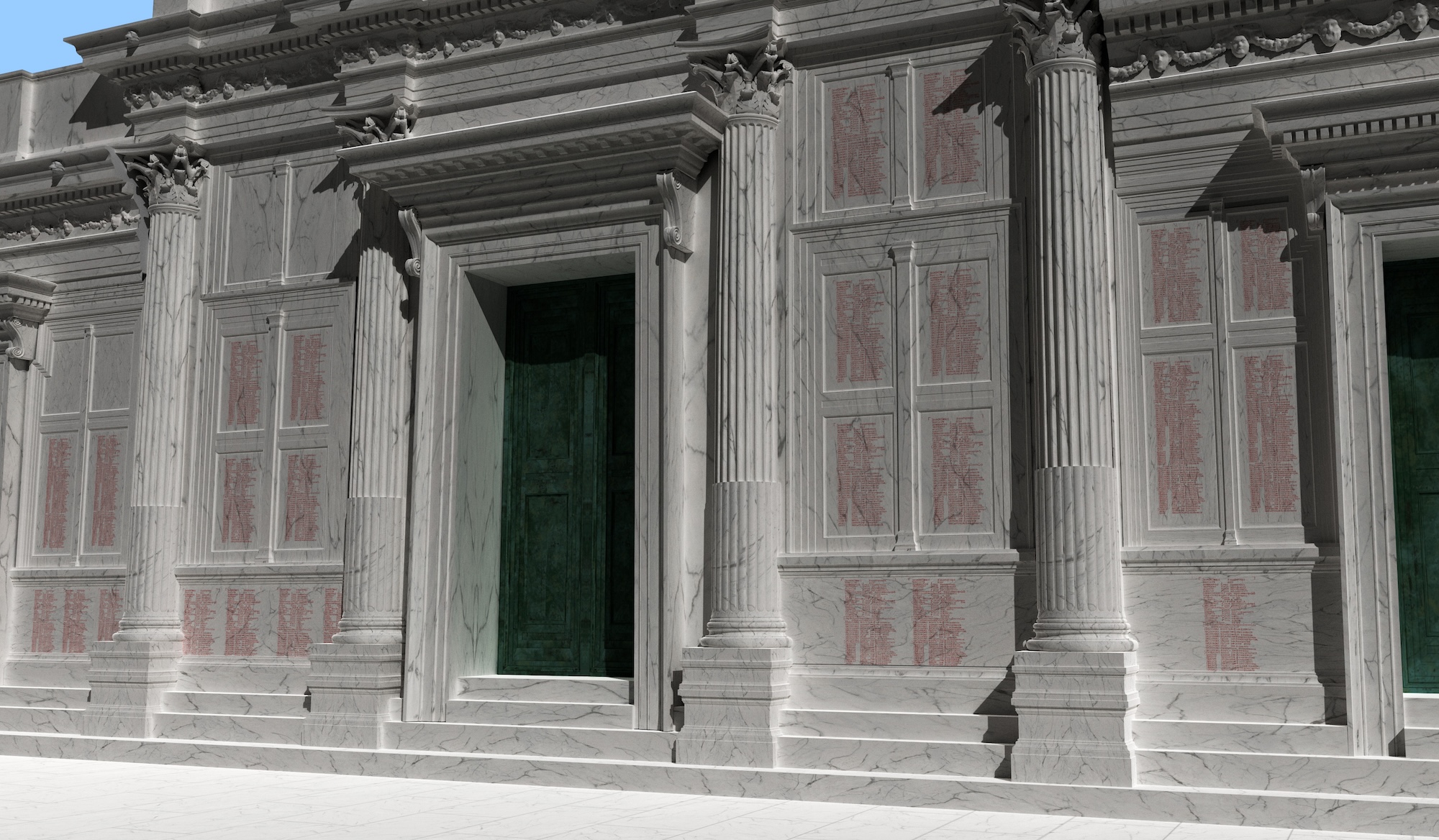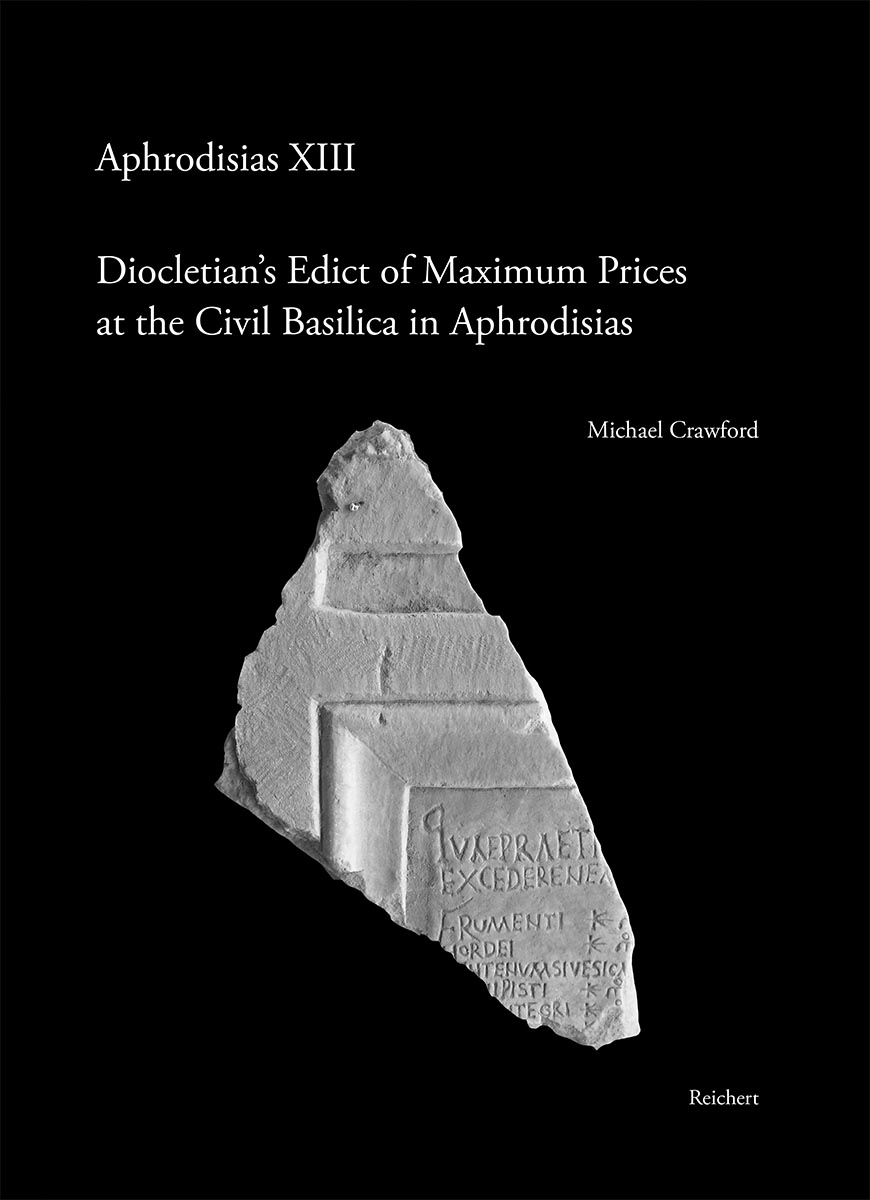Extensive project, new book reveal monument to inflation in Roman times


LAWRENCE — Inflation seems to be a modern problem. But in 301 C.E., it was just as crucial a concern among the population of the sprawling Roman Empire.
The issue had gotten so problematic that Emperor Diocletian proposed a radical solution.
“It was the first attempt during the Roman period to establish prices for all goods sold anywhere,” said Philip Stinson, associate professor of classics at the University of Kansas.
“This law did not fix prices, but it attempted to set the maximum price to ‘curb the rampant greed of retailers.’”
Stinson is a key contributor to a 50-year project translating this mandate that has culminated in a new book titled “Diocletian’s Edict of Maximum Prices at the Civil Basilica in Aphrodisias.” Exploring the renowned Greco-Roman city (in modern-day southwestern Turkey), Stinson teams with author Michael Crawford to provide an architectural reconstruction of the panels on which was inscribed the full decree, listing the prices allowed for a comprehensive array of goods and services. Stinson also contributes a chapter titled “Reconstruction of the Edicts on the Basilica Façade.”
It's published by Reichert of Wiesbaden, Germany.
The edict includes some 1,400 standard costs ranging from grain and food stuffs to clothing, building materials and labor costs.
“I was surprised to see the existence of prices for things like a Greek or Latin teacher. Or an architect. Or a child care provider,” Stinson said.

He revealed that the two most expensive items on the list are a pound of purple dye and a live lion. Each cost 150,000 Denarii.
The emperor’s preamble to the edict stated in no uncertain terms that it was illegal for merchants to exceed these amounts … under penalty of death.
Fragments of the edict were found at Aphrodisias in the 18th and 19th century, and some large pieces were recovered at the site in 1937. But it was in 1970 when large parts of the inscribed panels were recovered at the site of the city’s main municipal building, known as the Basilica. (Stinson wrote his Ph.D. dissertation about the Basilica and published it as a book in 2016.)
“Through study of the fragments of the text, which were inscribed on thin marble panels, we realized that it was not displayed as originally thought on a low wall or parapet. The entire edict of over 62,000 individual carved letters was actually put on the front wall of a preexisting huge building,” Stinson recalled.
That’s when it became a project not only about reconstructing the words but also the architecture.
“A lot of the fragments have moldings on them. So one of the first things we did was to sort all of them according to the types of moldings they had, and then that helped us pin down the structure and chapter organization of the entire list,” he said.
Calling the process “daunting,” the team was thrown off by the fact so many fragments were coming from the right half of the facade and not the left half. The team members eventually deduced that the list was not laid out in a symmetrical way.
“But in the end, it makes sense because most of one whole bay deals with the prices of clothing. It seems clear they wanted all the clothing to be together. Also, the most important prices are right there: food, wine, meat, fish. They wanted those prices lower down (at eye-level), so someone standing there would have no trouble reading them,” said Stinson, who is also the curator and director of KU’s Wilcox Classical Museum.
As for the usefulness of this list to denizens of the era, that is a matter of debate.
“One of the odd things about the letters on the blocks is there doesn’t seem to be any evidence for them being rubbed out or replaced with new prices. That has suggested that the list wasn’t used very much because, presumably, the prices had to eventually change,” he said.
“The other thing to keep in mind is that at Aphrodisias in rural Asia Minor, 99% of the things on this list weren’t available for sale there. To the locals, most of this list must have been mystifying and strange. It probably only had the impact of demonstrating the Roman government is trying to address the economic problems. Maybe that was the most important message.”
The facade where the massive list of prices was displayed stood for approximately 300 years or so until it was likely toppled by earthquakes in the seventh century, its message buried in rubble.
At KU since 2007, Stinson specializes in the archaeology of ancient Greek and Roman monuments and cities. He built his career as an architect prior to becoming an archaeologist. He first became involved with Aphrodisias, a UNESCO World Heritage Site, in 1999 while a grad student at UCLA. He regularly chaperones students from the KU school of architecture to work with him at the site.
Stinson said that even though this edict is more than 1,700 years old, it remains relevant for people today.
“Obviously, we’re in a time in 2024 when inflation is a big problem in our society,” he said. “It’s a timely subject. Maybe it just points out that the way we buy and sell goods hasn’t changed very much.”